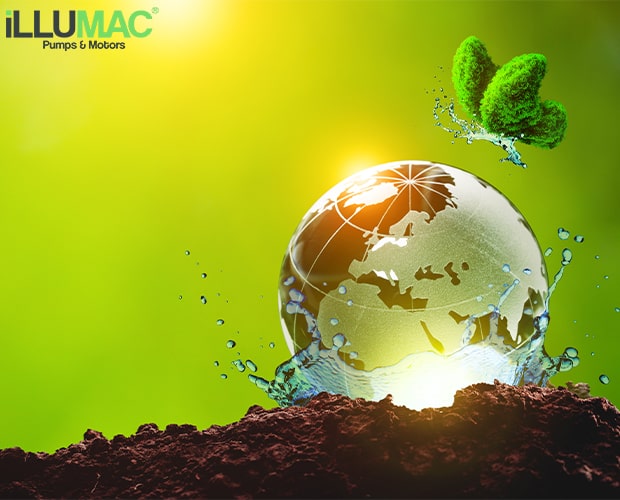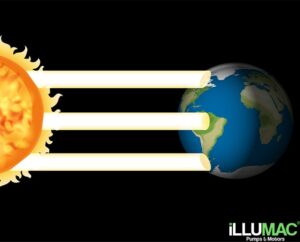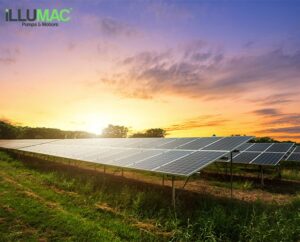India's Water Conservation Projects and Initiatives
In 2019, the Indian government’s Ministry of Jal Shakti launched the Jal Shakti Abhiyan. It is a national water conservation campaign that encourages citizen participation in order to promote water conservation at the grassroots level. The water conservation project was launched in two phases, from July 1st to September 30th, 2019, and from October 1st to November 30th, 2019.
The government launched the ‘Jal Shakti Abhiyan: Catch the Rain’ (JSA: CTR) on World Water Day, March 22nd, 2021, with the theme ‘Catch the Rain, Where it Falls, When it Falls.’ It covers all districts in India during the pre-monsoon and monsoon seasons, up to November 30th, 2021.
The government focuses on water conservation and rainwater harvesting structures, renovation of various traditional water bodies tanks, reuse, and recharge of bore wells, watershed development, and intensive afforestation as part of the campaign.
Sanchay Jal
The Jal Sanchay project was a water conservation initiative that began in the Bihar district of Nalanda. The water conservation project centered on the construction of check dams, as well as the desilting and renovation of the irrigation system and traditional water bodies. It also included raising awareness about traditional water conservation and rainwater harvesting techniques aimed at keeping the water table levels stable. The project was also carried out with the help of local farmers and via campaigns.
The project was chosen for a national award for excellence in 2017 as part of the Mahatma Gandhi National Rural Employment Guarantee Programme (MGNREGP).
Water conservation methods
Rainwater Harvesting
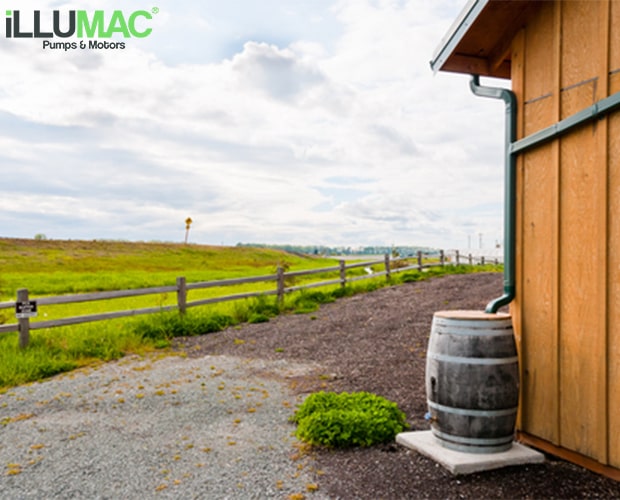
Rainwater harvesting is an extremely efficient method of conserving natural water and replenishing groundwater levels. Rainwater is collected and allowed to percolate into a deep pit or reservoir in this method of water conservation, where it seeps down and improves the groundwater table.
Metering of water

Installing water meters and measuring the amount of water used in residential and commercial buildings is another effective way of reducing water waste. The volume of water used is calculated and charged in accordance with the water price. Always keep an eye on your water bills for unusually high usage. It can aid in the detection of any leaks.
Recycling grey water
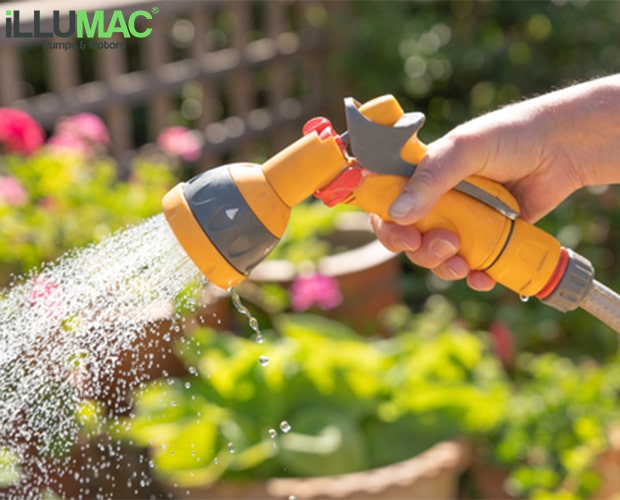
Greywater recycling is a method of collecting used wastewater from kitchen sinks, washing machines, and showers and recycling it for use in toilets, watering plants, and other applications. Greywater, in contrast to rainwater harvesting, is abundant in volume. Environmentalists have demonstrated that using this recycling system has reduced domestic water usage by nearly 70%.
Reduced-pressure valves
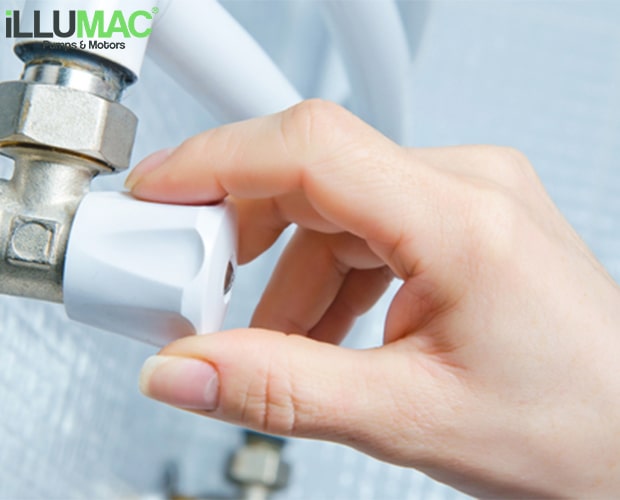
A pressure-reducing valve, in essence, regulates the amount of pressure in a hydraulic system. These valves ensure that a predetermined level of water is used. As a result, downstream water system components last longer, and water consumption is reduced. This is a very effective water conservation solution for industrial, residential, commercial, and institutional buildings.
Bathroom accessories that save water

Traditional water conservation methods in India
Rapid urbanization and water pollution have had a significant impact on the quantity and quality of surface and groundwater in many parts of India. The agricultural system in the country is still heavily reliant on rainfall. Because of changing rainfall patterns, the government is considering reviving traditional water conservation methods.
Some of them are as follows:
Bandhi or Talab
Talabs, also known as ponds, are reservoirs used to store water for drinking and household use. These ponds can be both natural and man-made. Talab refers to a reservoir that is less than five bighas in size, whereas bandhi refers to a medium-sized lake.

Jhalaras
In the past, Jhalaras were built to provide consistent water supply for community use, religious rites, and royal ceremonies. These are rectangular step-wells with three or four sides of tiered steps. These step wells collect subterranean water seepage from a lake or an upstream reservoir.

Baoli
The ruling class built baolis for strategic, civic, or philanthropic reasons. These structures were accessible to people from all walks of life. Baolis are beautifully designed step-wells with arches and motifs. The purpose of this baolis was primarily determined by its location. For example, baolis along trade routes were used as rest stops, whereas those within villages were used for utilitarian purposes and social gatherings.

Kund
Kunds were constructed primarily in Gujarat and Rajasthan to conserve water and harvest rainwater for drinking purposes. It is essentially a saucer-shaped catchment area that slopes towards the circular underground well in the center. Modern kunds are made of cement. They used to be covered in disinfectant lime and ash.
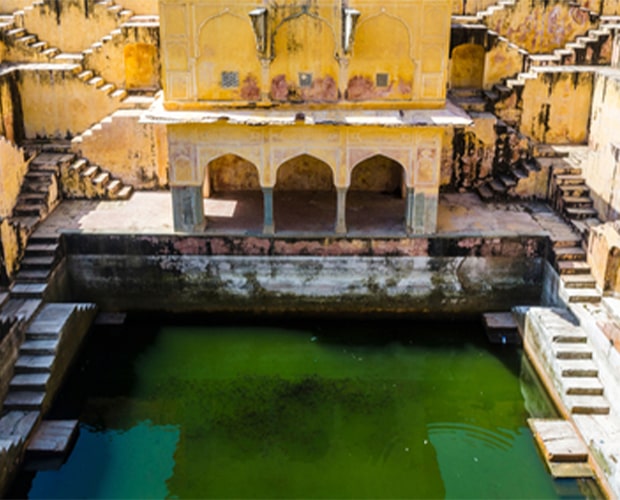
Bawari
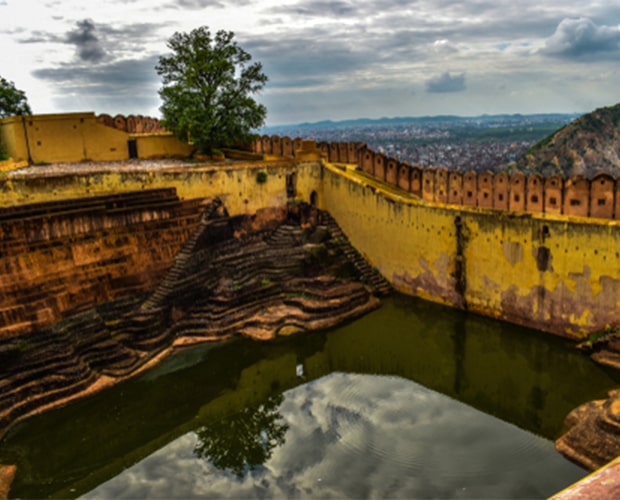
Taanka
Taanka is a traditional type of water conservation system that uses a rainwater harvesting technique unique to Rajasthan’s Thar desert region. Taanka is a cylindrical paved underground pit into which rainwater flows from courtyards, rooftops, and man-made catchments.
Nadi
Nadis are village ponds that collect rainwater from nearby natural catchment areas. Because these bodies of water are fed by irregular, torrential rainfall, they will quickly silt due to large amounts of sandy sediments deposited on a regular basis.
Drip irrigation system made of bamboo
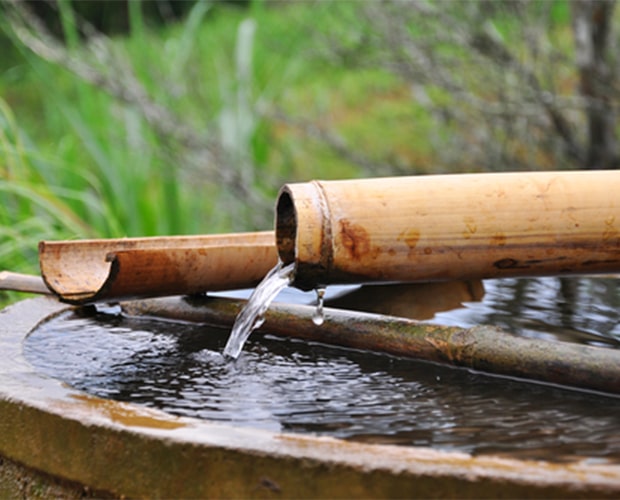
Zings
Water harvesting structures known as zings can be found in Ladakh. These are small tanks constructed to collect melting glacier water. In such mountainous areas, this is one of the simplest water conservation and management methods. A network of guiding channels directs water from the glacier to the tank.
Kuhls
One of the oldest methods of water conservation in Himachal Pradesh’s hilly terrains has been tapping glacial waters flowing from rivers and streams through surface water channels. These channels, known as Kuhls, are widely used for irrigation of the region’s over 30,000 hectares of fields. Hundreds of Kuhls live in the area.
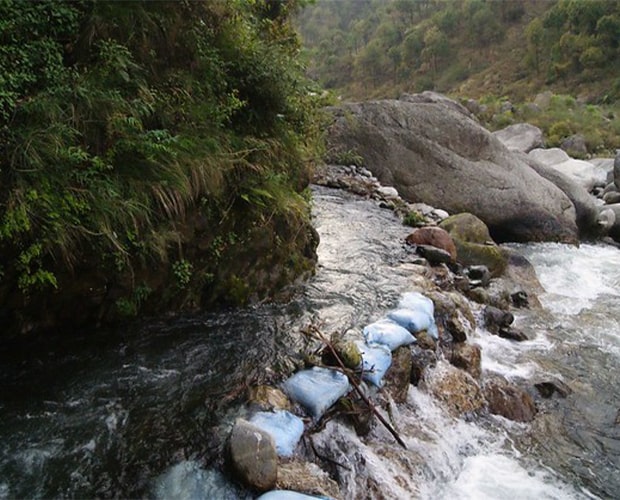
Jackwells
This is one of India’s oldest water conservation practices. Jackwells are small pits that collect rainwater. Originally, people in the Great Nicobar Islands’ low-lying regions built the structure out of bamboo and wood logs.

Ramtek water harvesting structures
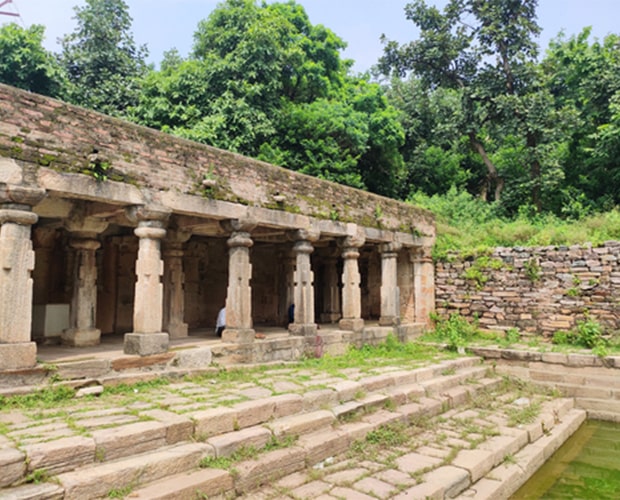
What exactly is water conservation?
Simply put, water conservation is the practice of efficiently utilizing water and reducing waste or unnecessary use. Because fresh, clean water is now considered a limited resource, water conservation has become critical.
Why is water conservation important?
Water conservation is important for a variety of reasons, including:
- Because water distribution is uneven, large parts of India remain deficient in both rain and groundwater.
Because of the country’s unequal distribution, the majority of the population faces water scarcity.
The demand for water in cities is greater than the supply. Furthermore, water conservation will ensure the availability of safe drinking water for future generations. This can be accomplished by ensuring that freshwater consumption from an ecosystem does not exceed its natural rate of renewal.
Water is needed to irrigate crops in India because rainfall is highly seasonal. Water safeguards the ecosystem and wildlife.
Furthermore, conserving water saves energy. That is, by using smart appliances that are both water and energy efficient, we can reduce water consumption while also saving energy.
Water conservation will keep more water in the environment and help to preserve wetland habitats for plants, wildlife, and aquatic life. It is especially critical during the dry seasons.
Freshwater extraction from icebergs has increased significantly in recent years. The demand for water has also increased significantly, as has the demand for water-based power generation.
Water conservation methods: Simple home water-saving tips
Ways to Save Water in the Kitchen
When cleaning food, do not use running water.
When cleaning vegetables, avoid using running water. Instead, soak the vegetables in a bowl of water for a few minutes before washing them. Frozen foods should not be defrosted under running water. You can defrost frozen items by leaving them outside overnight.
Switch to water-saving appliances at home and work.
When purchasing a dishwasher, look for one with a ‘light-wash’ setting. Only use an electric dishwasher for full loads and shorter cycles.
Wastewater should be recycled.
Recycle the wastewater from RO water purifiers to clean your car or water your plants. This water can also be used to mop or pre-rinse laundry. Do not drain any remaining water from water bottles. It can be used to water plants or to fill bird water bowls.
When cleaning the dishes, turn off the water.
Turn off the water while you’re not rinsing if you have to wash a few dishes by hand.
Bathroom Water Conservation Methods
Shower for fewer minutes.
A four-minute shower uses approximately 20 to 40 gallons of water. Shower for fewer minutes. A partially filled tub uses less water. Water-saving showerheads and shower timers can also be installed.
When not in use, turn off the water.
When brushing your teeth or shaving, turn off the water. Before brushing, fill a glass with water and rinse your mouth with it. While shaving, use short bursts of water to clean the razors.
Examine the toilet for leaks.
After using the faucets, turn them off completely. Water dripping from faucets can waste up to 50 gallons of water per day. Repair any leaky faucets as soon as possible.
Check the toilet flushing systems for leaks on a regular basis. Simply place dye tablets or drops of food coloring into the tank, and if color appears in the bowl one hour later, your toilet is leaking.
Choose low-flush toilets.
Install low-flush toilets, which can reduce water consumption by up to 50%.
Only use an automatic washing machine for full loads.
An automatic washer can use up to 35 gallons of water per cycle.
Install water-saving bathroom fixtures.
Install water-saving showerheads and faucets to reduce water consumption. Shower heads with water-saving features or flow restrictors can reduce shower flow from five to ten gallons per minute to around three gallons per minute.
Install dual flush toilets in your home, which have two mechanisms for flushing different amounts of water.
Water-saving techniques for the garden and outdoors
Plants that require less water should be grown.
Choose drought-resistant plants and trees for your home garden to use less water.
Soak the lawn thoroughly.
Allowing enough time for the water to seep down to the roots is an effective way to water your lawn. However, do not leave the sprinklers on for the entire day. A light sprinkling may cause water to accumulate on the surface and evaporate, resulting in waste.
Make sure you don’t overwater the soil because it can’t hold any more water. Avoid watering the lawns for a few minutes every day. Instead, do it every three to five days. During the summer, gardens and lawns require only 5 millimeters of water per day.
Save water when washing your car.
Instead of a continuous water flow, use a bucket of water to rinse off the soapy water.
Request that children do not play with the hose or sprinklers.
During the hot summer months, most children prefer to play in the garden with a hose or sprinkler. However, it may result in water waste.
Water conservation as a solution to water-related issues
Several countries have been experiencing severe water shortages, primarily as a result of overpopulation. Water table depletion, which is also caused by deforestation, has become a major concern.
Global warming also has an impact by causing water shortages in some areas and exacerbating existing crises in others.
In comparison to developing countries, developed countries are able to address the issue and conserve water through a variety of methods such as recycling wastewater, desalinating seawater, building dams, importing food, utilizing deep water aquifers, and so on.
Water conservation, primarily through reuse and recycling, could be an effective solution to the problem. These methods can meet nearly one-fifth of a city’s water needs. Traditional water conservation practices are being revived in many countries, including India.
Interesting facts about water conservation
Water is a natural resource that is essential for the survival of life on Earth. However, water mismanagement and waste have resulted in a global water crisis affecting many parts of the world.
Rainfall accounts for nearly 85 percent of India’s available water. The remaining 15% is due to melting snow.
As part of a major water rejuvenation plan, the Indian government launched the ‘Namami Gange’ program for the Ganges river basin.
India’s annual water requirement is 1100 billion cubic meters.
The agriculture industry consumes 80 percent of the country’s total water supply.
Water scarcity also results in lost income because many women spend approximately 150 million workdays per year carrying and fetching water.
- Almost ten crore people drink water with high fluoride levels.
Here are some water facts you should be aware of:
There is only so much water on the planet. According to the water cycle, the water that is currently available is recycled repeatedly.
Almost 97 percent of all water on the planet is saltwater, which is unfit for human consumption. Only about 3% of water is freshwater, of which only 0.5 percent is suitable for drinking; the remainder is found in glaciers, the atmosphere, soil, and other places where it cannot be consumed.
Plants are essential for ecosystem maintenance and require water to survive.
The average adult human body contains 50 to 65 percent water, with infants having a higher percentage.

